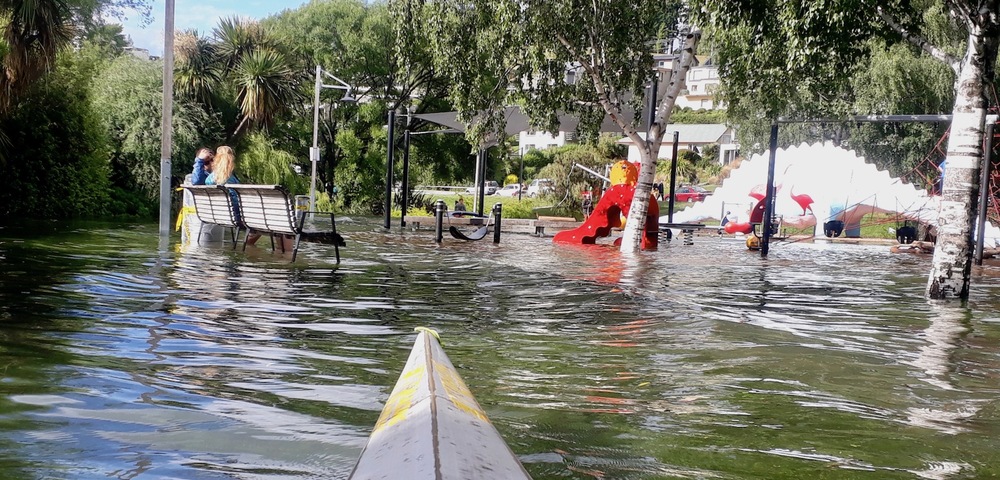Urgent call for flood response plan
Diana Cocks
18 October 2020, 7:01 PM
 The December 2019 floods temporarily closed streets in Wanaka’s CBD, including lower Ardmore Street. PHOTO: Wanaka App
The December 2019 floods temporarily closed streets in Wanaka’s CBD, including lower Ardmore Street. PHOTO: Wanaka AppProperty owners in Wanaka’s central business district (CBD) are calling for the council to urgently update the CBD’s flood response plan.
During the public forum at last week’s (October 8) full council meeting in Wanaka, the Wanaka CBD property owners’ group chair Roger Gardiner was critical of the council’s lack of action regarding a plan to mitigate the impact of flood waters, such as those experienced last December.
He said following the December floods, which closed many businesses in the CBD, Queenstown Lakes District Council (QLDC) staff had promised a debrief and the update of a flood response plan, including an investigation by engineering staff into stormwater and sewerage infrastructure.
“QLDC infrastructure personnel have basically been missing in action in our view,” he said.
He said that the closure of central Wanaka businesses, some caused by the council shutting down the sewerage system amid concerns of contamination, gave the impression that the town itself was closed and caused business losses in excess of $100,000.
RELATED:
Local democracy under the spotlight
Almost ten months have passed since the floods and while the Otago civil defence and emergency management emergency staff initiated post-flood discussions they have neither the resources nor funding to take on flood mitigation, Roger said. “That’s the responsibility of [the QLDC] council,” he said.
While there have been several meetings at the Wanaka Community Board level, “there appears to be no directive from council level that a flood response plan update has any urgency or priority”, Roger said.

The sun came out but it took a long while for flood waters to recede, even at the Dinosaur Park. PHOTO: John Walker
“I suggest if businesses had been closed as a result of flooding in the Queenstown waterfront there would have been action taken by now and I think council has dropped the ball in terms of following that up,” Roger told the elected members.
He said business operators acknowledge that living at the edge of the lake runs the risk of occasional floods but it doesn’t mean “we shouldn’t look for a better way to reduce the impact of the floods”.
Roger said discussions about amending the sandbagging protocols to keep the water from reaching the shops, ensuring the water pumps deployed were adequate to the task, and using non-return valves on the sewerage system might be fruitful and could keep the town centre accessible.
These ideas might not be the solution, he said, but it’s essential council and locals understand what happened during the last flood and the mitigation measures required to better survive the next flood.
“We’d like to see council do its utmost to ensure the CBD continues to operate as best it can [during a flood] and avoid business closures.”
Roger said his group requests that the QLDC urgently undertakes a flood response debrief; allocates appropriate staff with resources to undertake research into improving infrastructure to mitigate the impact of floods; and commits to a timetable to get the work done.

